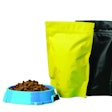
In this third part of a three-part series, pet food manufacturers will learn the steps to test the readiness of their preventive controls.
Part 1: Food safety plan readiness
Part 2: Hazard analysis readiness
The U.S. Food and Drug Administration (FDA) has provided much flexibility to the animal food industry for implementing the Food Safety Modernization Act (FSMA). The question facility owners, operators or agents in charge should be asking is, “Are we now ready for FDA inspections considering these still relatively new and complex requirements?”
The Preventive Controls for Animal Food rule (also known as the Preventive Controls Rule) was published in September 2015, three years prior to the date official inspections begin. In the meanwhile, FDA has truly held up its promise to “educate” before “regulating,” demonstrating flexibility in listening to the animal food industry’s request for staggered compliance dates for CGMPs (Current Good Manufacturing Practices) and preventive controls. Then, in another accommodating move, FDA delayed routine inspections of CGMPs and preventive controls.
Inspections begin
Despite FDA's accommodating approach, FDA has emphasized all along that its job is to protect public health and that it will rely on its new tools and authorities to protect human and animal consumers by keeping food with actual and potential hazards out of the marketplace, and the industry must not lose sight of that authority, nor overlook that the FSMA Preventive Controls for Animal Food regulation can be dauntingly complex in detail. Even if you have diligently read the regulation, including the lengthy preamble, taken Food Safety Preventive Controls Alliance (FSPCA) training and have studied all the guidance documents FDA has issued to date, something may have been missed in your approach to compliance. Use the example questions below as a quick test of the readiness of your preventive controls.
Preventive controls — test your readiness
- Have you validated your process controls? Do you know how much time you have to run a process trial for new processes or changes in an existing process? Is validation of sanitation and supply chain controls required?
Process preventive controls are the only preventive control requiring validation. Validation determines if a preventive control can actually control a hazard and may be useful for sanitation preventive controls to ensure capability of a cleaning process, but validation is required only for process preventive controls. Your supplier, rather than you, would need to conduct validation on any process controls that are implemented at the supplier. Of note is that validation falls under the term verification but is distinctly different: verification is a determination of whether your systems and procedures are being carried out as you intended, rather than whether the action is capable of controlling the hazard.
FDA provided flexibility in its time requirements for a facility to conduct validation of a process, allowing a 90-day time period which can be extended if justified in writing by the facility’s Preventive Controls Qualified Individual (PCQI).
- Can an environmental monitoring program be considered successful verification of effectiveness of sanitation controls if it has shown no detection of pathogens for many years?
No. FDA has stated skepticism of the validity of an environmental monitoring program, which never detects a pathogen. A successful environmental monitoring program should diligently search for pathogens.
- Are you certain of your readiness — and that of your suppliers, whether domestic or foreign — related to supply chain preventive controls? Can you give the situations when you do not need a supply chain applied control? What happens if you purchase from a broker who has chosen the supplier, or if you are a contract facility and the brand-name customer is the entity that selects and approves the ingredient and the supplier of domestic or foreign ingredients?
A supply chain applied control is not needed if your hazard analysis identified no hazard requiring control by your supplier, or if you or a downstream entity is controlling an identified hazard. But be sure you do know who your supplier is: the definitions of suppliers under both the Preventive Controls and the Foreign Supplier Verification Programs (FSVP) rules can be confusing, as a supplier is not necessarily the entity from which you purchase a raw material or an ingredient. Suppliers are those that grow the food, raise the animal or the manufacturer/processor and, if the latter, the supplier must be in compliance with the Preventive Controls Rule just as you, the receiving facility, must be. Ensure all of your suppliers are compliant with the Preventive Controls Rule.
Further, if you purchase from an entity other than the one that meets the definition of your supplier, only you can actually approve the supplier. FDA has provided flexibility within the rule in allowing other entities to supply information and conduct activities to help you approve suppliers, but you must approve the supplier. Also, FDA has provided flexibility with enforcement discretion for co-manufacturer situations: In its November 2017 Guidance, FDA announced that “under certain circumstances and on a temporary basis” it did “not intend to take enforcement action until November 6, 2019.” FDA allows a receiving facility to elect to use the supply chain controls in the Preventive Controls Rule even for foreign suppliers rather than have to implement FSVPs (Foreign Supplier Verification Programs), as long as the receiving facility identifies itself as the FSVP importer.
- Do you know your deadlines for obtaining customer assurances of control of hazards by downstream entities and your deadline for disclosing hazards not controlled?
FDA recognized the complexity of many supply chains and thus extended the deadline for obtaining customer assurances of control of hazards by two years. But there is no extension for the disclosure of hazard requirement. Hazards not controlled by a facility must be declared and “in articles of trade” such as labeling or bill of lading.
- Are you prepared for the default verification activity for ingredients or raw materials with SAHCODHA hazards?
A SAHCODHA hazard is a hazard with reasonable probability of Serious Adverse Health Consequences or Death to Humans or Animals. The default verification activity is an audit of your supplier before you purchase and annually thereafter. Although a third-party audit is acceptable, not just a routine third-party audit will suffice; the audit must check for the details of control of the hazard.
The above questions are not a complete and comprehensive test of your preventive controls, but are intended to challenge your understanding of some of the details of implementation and help you ensure your readiness. For more information on the details of compliance, FDA has provided a number of educational tools, notably the curriculum developed with the FSPCA, and the FSPCA training courses available.
FDA has indicated that these courses provide a background and foundation in not only the regulation but also in the scientific principles on which the regulation was based. Look also to the comprehensive guidance documents provided during 2016, 2017 and 2018, easily accessed on the FDA website, and to FDA’s technical assistance network, which fields questions on the regulation.
Rachel Montgomery is an FSPCA Lead Instructor with over 30 years’ experience as a food safety executive in large-scale manufacturing. Montgomery is the Principal of Simple Compliance Solutions LLC and a registered microbiologist.

















